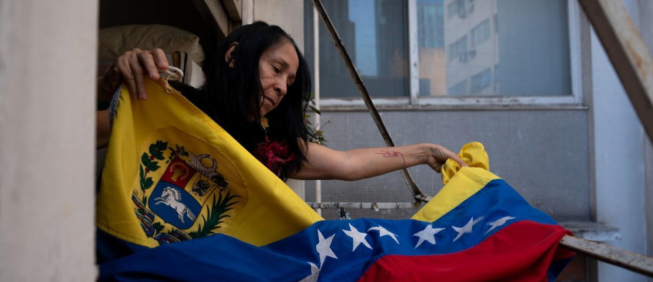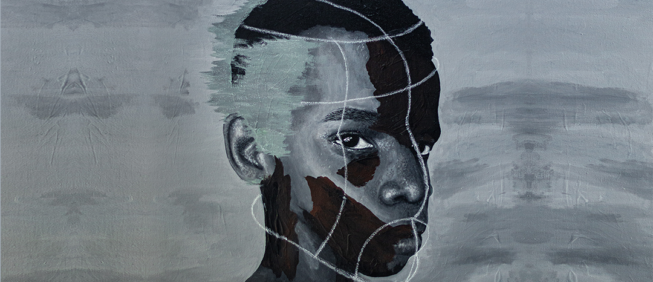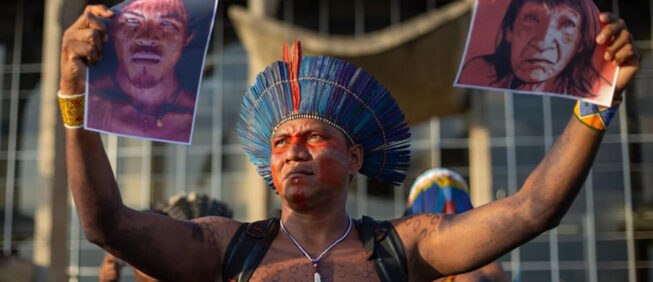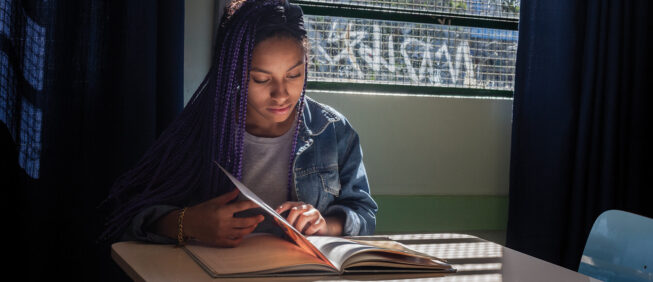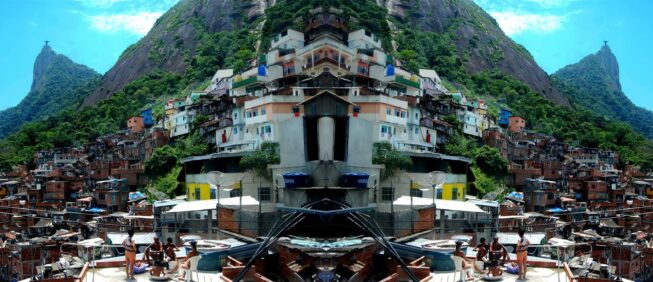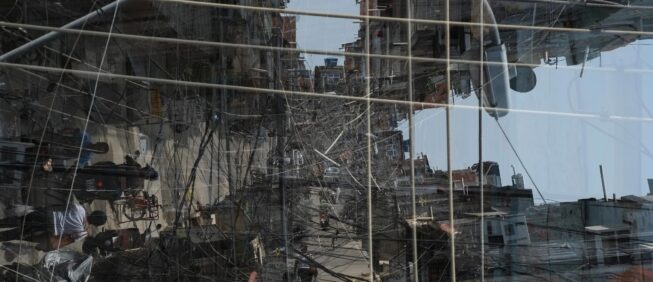A People’s Existence by Resistance: The Kurds
Organised as a stateless nation based on the principles of democracy, ecology and women's liberation, the Kurdish people have proven, again and again, that a society can exist without taking power, without being hostile to other peoples and without drawing borders
Zozan Sima | Jineolojî Academy
| Rojava | Kurdistan |
20 de April de 2021
Our direct and participatory democracy is the fruit of a wide organisational network that allows for regional specificities and a diversity of languages and cultures, as well as autonomous women’s and young people's structures.
These structures have managed to flourish despite the racist attacks on the Kurdish people that we have endured for millenia. Indeed, owing to our origins in Mesopotamia — the historic location of the world’s first state civilizations — our identity is one forged by the need to defend ourselves against attacks from states that would refuse to recognize our culture. Now, thousands of years later, the people of Kurdistan continue to struggle for their existence and their freedom, guided by the leadership of women and the spirit of the women's revolution.
Despite our long history of existence, the most devastating violence that has taken place against the Kurds would take place only with the rise of Capitalist Modernity in the last two centuries. Though the enforcers of these policies in the region have been the states of Turkey, Iraq, Iran, and Syria, it has been, first and foremost, the global imperialist powers, especially Britain and the USA, that have prepared the ground for these states, offering them support and guidance in committing massacres. This violence, at its core, is one of cultural racism.
Struggle for Existence in Bakur Kurdistan Against Turkish-Sunni Islamic Racism
The Republic of Turkey, in its construction process based on the Turkish-Sunni identity, turned towards the Kurds following the 1915 Armenian genocide. However, due to the Kurds’ high population and level of social organisation (based on tribes capable of self-defence and self-governance), the Turkish state could not afford to carry out a total genocide. Nevertheless, it developed a process of long-term elimination. This slow destruction has been implemented bit by bit following extensive research conducted on the specificities of each region. Alongside this physical massacre, a continuous form of genocide took hold, one that Abdullah Öcalan defines as “cultural genocide.”
The state began this process by collecting the weapons of the people. Disarming the tribes meant breaking Kurdish society’s power and its ability to undertake self-defence. Next, long-term military service in the Turkish nationalist army became compulsory. Kurdish political and social organisations and even the Kurdish language and culture were prohibited. Those who dared to protest were eliminated, either by arrest, exile, or massacre.
In Bakur (North Kurdistan), multi-faceted practices took place and were kept in effect, including the killings of thousands of people, systematic destruction, burning of villages, and forced displacement. Children were taken from their families to and assimilated in state boarding schools. Along with the extensive massacres in Kurdistan, in Koçgiri after the 1921 rebellion, in Bingöl and Amed after the Şex Said rebellion in 1925, in the Zilan valley after the 1930 Agirî uprising and during the Dersim genocide in 1938, tens of thousands were killed, harassed, raped, and arrested. Similar attacks were carried out in the 1990s against those who supported the struggle of the PKK, which is the 29th uprising for the freedom of Kurdistan.
Kurds who collaborate with the state are used to cover up these murderous policies. Through persons that surrender to the state or are obliged to do so, Kurds are incited against each other. The village guard system implemented in Kurdistan, developed by the Turkish state within the tribal structures themselves, is a paramilitary organisation created to neutralize and even murder revolutionary, democratic, and patriotic Kurds who are waging a freedom struggle. These village guards, who have committed crimes ranging from drug trafficking to harassment of women, rape, theft, and corruption, are protected by the state. Thousands have been murdered by these gangs and thrown into acid wells. The fate of thousands remains unknown. Since May 27, 1995, the mothers of the ‘disappeared’ have demonstrated every Saturday in public to ask for clarification about their missing relatives. They became known as the “Saturday Mothers.”
Women have been the most deeply affected by these state policies and massacres. The massacre carried out in Dersim in 1938 was essentially a massacre of women. Similar to the ISIS attacks in Shengal in 2014, thousands of women were kidnapped in Dersim — according to some sources, 4000 or more. Thousands of young women from the Dersim region, which is a Kurdish Alevite area, were taken and given to Turkish state officers as adopted children or spouses. Still there is no information about them. Documentaries such as “The Lost Girls of Dersim” reveal the racist policies towards women. Even Sidika Avar, a teacher of the Kemalist regime who worked in the region wrote a book about her memories called “My Mountain Flowers.” This book is a confession of assimilation policies inflicted on young women, about the children who were forcefully taken from their families or those whose families were killed in the massacre and raised as Turkish and Sunni Muslims in state boarding schools. Although some of them later reunited with their families, most of them were deeply assimilated and had forgotten their own language and identity.
These policies have had a decisive effect on the fact that the Dımilki dialect of the Kurdish language, which is used extensively by Kurds from Dersim, is an endangered language today. The most severe practices of the Turkish government emerged with the prohibition of the Kurdish language, and these practices mostly affected women. Initially, due to feudal traditions, women did not have the opportunity to attend schools, while Kurdish men were forced to learn Turkish at school and the military service they were forcefully taken to.
The enforced teaching of Turkish has caused long-lasting trauma for Kurdish children. Every Kurdish child who started primary school and did not speak Turkish was beaten and insulted for speaking Kurdish, and for years had to read racist oaths at schools every morning saying “I am proud to be a Turk… I want to sacrifice my existence for the Turkish existence.” The teachers were permitted or even encouraged to violently punish Kurdish-speaking students, to warn their families, or even expel them from school.
Turkish state policies produced films, photographs, and books that mocked the Kurdish language and culture. These are attempts to turn the Kurdish identity into symbols of ignorance, illiteracy, and backwardness. This situation has damaged children's relationship with their mothers, who represented their Kurdish existence with their clothes, language, and lifestyles. Children were made to feel embarrassed or even ashamed. The ban on the mother-tongue led to consistent humiliation of women in official places and hospitals.
Despite such repression, the Kurds have built up many organisations and institutions to protect the Kurdish language and culture. To reach freedom, the people’s resistance continued uninterrupted. The armed resistance developed by the PKK under the leadership of Abdullah Öcalan has been effective in pushing back racist policies. The resistance that started in Bakur Kurdistan has gradually spread to all four parts of Kurdistan. Along with the national liberation struggle since the 1990's, the perspective that “the Kurdistan revolution is a women's revolution” has been developed.
Women who take part in the freedom struggle in Kurdistan carry out an effective struggle by forming self-defence and political-social organisations against racist policies. A new consciousness has been created to combat assimilation policies, valuing the use of the mother tongue, traditional clothing, and symbols of Kurdish culture. Women have turned public events like marches on March 8, Newroz festivals, conferences and demonstrations into events of cultural resistance by participating with their traditional clothes and colours.
Kurdish women have organised themselves in all areas of life, from universities, factories, villages, neighbourhoods, and municipal parliaments, to the field of culture and arts and academies. The mothers of the martyred guerrillas have organised themselves in the Initiative of Peace Mothers and have been working for a peaceful solution to the Kurdish cause for 21 years. The families of freedom fighters and political prisoners also have struggled and organised to support their children's struggle. Furthermore Kurdish women have created joint platforms to struggle together with Turkish feminists, socialists, democrats, anarchists, and ecologists. They have come together for a peaceful solution to the Kurdish issue and against racist and sexist policies.
Against this resistance and organisation, the attacks of the Turkish state on women became more and more intense. The hardest attacks against women and the women's movement developed during the Erdogan reign. Women MPs and co-mayors have been arrested, women's institutions have been banned. Thousands of activists of the women's liberation movement are now imprisoned.
From Being Ignored to Revolution: Rojava Kurdistan
Rojava Kurdistan was held under the rule of the Ba'ath regime that represented Arab-Alawi nationalism for years. In their policy towards the Kurds, the “Arab Syrian Republic” claimed that Kurds were migrants who came to these lands much later. In order to change the demography of the Kurdish region, with their project titled the Arab Belt, in the 1970's, Arab families were settled in villages in the Kurdish areas. A large part of the Kurdish population had their citizenship status revoked and were called ecnebi (foreigner) or mektum (fugitive).
Without documentation, Kurds did not have any citizenship rights and could not benefit from public services. They were dispossessed of the opportunities to attend school, to find a job, or to own property. Nevertheless, Kurds were still forced to perform seven years of military service for the state. During different periods, some Kurdish revolutionaries and intellectuals such as Nuri Dersimi, Celadet Bedirxan, and Abdullah Öcalan came to Rojava to avoid the persecution of the Turkish state and to continue their struggle for the liberation and unity of Kurdistan and the Kurdish people. In every period, the people of Rojava supported and participated in the struggles in other parts of Kurdistan.
Anticipating the fascist military coup in 1980 in Turkey, Abdullah Ocalan arrived in Syria together with members of the newly founded Kurdistan Workers Party (PKK). For years, Rojava was a ground for educational and organisational works of the Kurdistan Freedom Movement. The society, militia, sympathisers, and people's committees in Rojava have a 40-years-history of struggle. Since the beginning, women's participation has been very strong. Women have tried to solve their social problems by both joining the guerrilla ranks or establishing committees.
Clandestinely, women organised cultural works, political education, and Kurdish language classes at their homes. By working in a communal manner, women played an active role in raising awareness, organising material resources in support of the struggle, and creating social solidarity. Families even encouraged their children to join the guerrilla forces. From the 1980’s onwards, many women from Rojava Kurdistan joined the guerrilla and became martyrs in the struggle. In 2005 the first autonomous women's organisation was established under the name of Yekitiya-Star. With the Rojava revolution it started to organise on a wider scale and changed its name into Kongra Star.
With the popular uprisings and rebellions in the Middle East starting in 2011, the Rojava revolution was successful in establishing structures of people’s self-administration based on radical democracy, ecology, and women's freedom. The role of women has been decisive in the realisation of democratic autonomy in Rojava. The armed resistance that developed under the leadership of the Women’s Defence Units (YPJ) against ISIS gangs both in Rojava and Shengal in 2014 had a worldwide impact. Due to their organised will, women achieved equal representation and the implementation of a co-chair system in the political sphere and all institutions.
Kurdish women have established autonomous organisations in every field of life: from defence units to civil organisations, culture and arts councils, communal economy institutions, and even the women’s justice council. Many principal decisions concerning women can only be taken by the women themselves. Crimes against women are dealt with according to women's laws which were initiated by the women’s movement and have been approved by the constitutional assembly of the democratic autonomy. Along with these, common councils have been established together with Arab, Syriac, Armenian, Circassian, Chechen, and Turkmen people as well as people of Ezidi, Christian, and Muslim beliefs. Women as well as people from all national, religious, and social groups are guaranteed participation in this system through their own self-organisation.
The War for Existence in Başur Kurdistan between Sunni-Arab Nationalism and Micro-Kurdish Nationalism
The Iraqi state, which was built on the basis of Sunni-Arab nationalism, has continually conducted massacres of Kurdish people in the geography of Kurdistan. It is estimated that more than 200,000 people were murdered, thousands of villages were burned down, and more than 1 million Kurds displaced under the regime of Saddam Husseyin. Thousands of Kurdish women were subjected to harassment, rape, or sold off to Arab countries. The most horrendous of these massacres took place in Halabja, Başure Kurdistan from March 16, 1988 to 1989. The chemical attack involved the usage of mustard and sarin gas and killed more than 5000 people, the majority of them were women and children. Around 10,000 people were injured. The chemical weapons’ impact has caused many diseases to continue on to future generations. Although Saddam and his associates were brought to justice and executed, the international powers that were complicit in the massacre via their sale of these chemical weapons to Iraq have never been prosecuted or put on trial.
Başur Kurdistan has a long history of resistance struggles. Women peshmergas also played a role in this resistance, despite their limited number and less active positions. Leyla Qasım became a symbol through her resistance as a Kurdish woman and was executed by Saddam. Margaret Shello, another peshmerga woman of Assyrian origin. has still not had her murder brought to light.
After a long struggle, the Kurds gained their autonomy with the defeat of the fascist Ba’ath regime. However, with the imperialist policies of the USA, the Kurdistan region has been occupied in a different way. Due to policies that promote the spread of capitalist lifestyle and culture in the region, there is continuous immigration towards Europe. With the admiration of European and US culture, people perceive their own language and culture as backward.
Without protecting and developing a policy for the benefit of its people and Kurdistan, the regional government of Basure Kurdistan (in which KDP and PUK are the decisive forces) made concessions to Iran and Turkey. Instead of the needs of society, personal and family gains determine their politics. These policies, which we can call the micro-nationalism of an oppressed nation, create a vicious circle by bargaining between the international powers that hold control over the Kurds, allowing them to be massacred.
Furthermore, the administration’s current attitude towards women reproduces sexism and strengthens the patriarchal system. The number of women who have been massacred under the name of “suicide” or honour killings is very high. Although there are quite a lot of NGO-style women's organisations, as in other parts of the world, they aim to dampen reactions and fight against the patriarchal system within a Eurocentric perspective of liberal solutions. The Kurdistan women's liberation movement in Başur has to struggle against imperialist and Eurocentric approaches, against the domination of colonialist states over Kurdistan as well as the Kurdish administration dominating the region. Women play a leading role in works for “national unity” by connecting elements of political, social, cultural, economic, and self-defence consciousness and organising the four parts of Kurdistan.
Shengal, the ancient holy sanctuary of the Ezidis, carries a specific meaning within the scope of Başur Kurdistan as well as due to implementation of specific racist policies towards Ezidi Kurds by the Iraqi regime. The Ezidi people, who were subjected to the 74th genocide by ISIS, have been constantly exposed to racist attitudes for being both Kurdish and Ezidi. Similar to the witch hunts of medieval Europe, Ezidis have been the target of Islamic fundamentalist groups directed by state governments. Ezidis were constantly targeted by propaganda accusing them of “worshipping the devil,” by distorting the Ezidi belief that God and the angels cannot be evil and that evil is related to humans. In essence, the Ezidis are the stem cell of Kurdish culture and existence.
Their belief system is based on worshipping nature. In this sense, we can regard it as a continuation of the neolithic goddess culture. However, due to the many massacres they have witnessed, they have become increasingly introverted, even creating caste systems based on self-protection. During Saddam’s rule, many Ezidi people were expelled from their villages and forcibly resettled in towns. Hereby they were detached from their Sacred Mountains and settled in the plains. After 2003, the area of Shengal was put under the protection of the peshmerga forces of the Kurdistan regional administration.
When the genocidal ISIS attacks began in Shengal on August 2, 2014, the KDP peshmerga forces tasked with protecting the area escaped and left its people vulnerable to massacre. As a result, nearly 7000 women and children were abducted, thousands were killed and thousands more were displaced or migrated. Only the intervention of the guerilla forces HPG and YJA-Star from the mountains of Kurdistan together with the People’s and Women’s Defence Forces YPG and YPJ from Rojava were able to prevent further massacre. More than 150 guerrillas who fought to save the Ezidi refugees in the Shengal mountains fell martyr in this battle against ISIS. After the defeat of ISIS in Shengal, the people of Shengal began to organise on the basis of democratic autonomy.
For the first time, Ezidi women built up their own defence forces, women's councils, and many other women's institutions. The story of a woman that ISIS kidnapped and sold as a slave at the markets of Raqqa was striking. This young woman managed to escape from slavery and joined the YJŞ (Shengal Women's Units) and participated in the battle for the liberation of Raqqa, the so-called capital of ISIS. She came back to place a flag on the marketplace where she was sold as a prisoner. But as we write this piece, Turkey and Iraq, along with the KDP and the USA are negotiating a response and plan to alter Shengal’s autonomy. Nevertheless, with the resistance led by women, the people of Shengal will continue their struggle for autonomy.
Rojhilatê Kurdistan: A Place of Resistance Against the Darkness of the Mullah Regime
In the Islamic Republic of Iran, which was founded upon Shia-Persian nationalism as well as earlier Iranian governments, the Kurds were not acknowledged as their own people, but rather as a “branch of the Persian people.” Thus, the Iranian regime did not recognise Kurdish language, culture, or political rights. Yet, this region contains the richest elements of Kurdish culture, including art and literature, wherein women have an important role. Many of the rich examples of Kurdish music are from the regions of Rojhilat. The authenticity in terms of belief and language diversity has been preserved, and the motives of the Zoroastrian faith are very much alive.
The organising and resistance of the Kurds in this region also has a long history. However, the Iranian state, with its conspiracies, infiltrations, and assassinations has rendered these organisations’ resistance ineffective. After the experience of the Kurdish Mahabad Republic with a short history, and along with the execution of its leader Qazi Muhammed, an effective resistance movement could not be developed. Still armed resistance organisations such as the Marxist Komala were established and women took an active part in these organisations. However, most of these organisations either became ineffective as a result of the policies of the Iranian state or were eliminated by various methods.
Especially after the international plot against Abdullah Öcalan in 1999, a significant number of Kurds from this region joined the Kurdistan freedom struggle. More than a thousand young men and women joined the guerrilla army, and comprehensive actions were taken. Kurdish women from Rojhilat have also established their autonomous organisations beginning in 2004, both in the armed self-defence forces and within the social sphere. The Iranian state’s tactics of arrest and execution failed to break this organisation's will. Şirin Elemhuli, who led this resistance, was executed on May 9, 2010, along with four of her comrades. There are still many people who are threatened with execution in Iranian prisons. One of them is Zeynep Celaliyan. Various international campaigns have been carried out for the release of Zeynep Celaliyan, who has been constantly tortured because she did not surrender. Her execution was only delayed due to public actions. Kurdish women in Rojhilat continue their struggle in a multifaceted way. They use social media effectively, create awareness through the media, and continue their work despite the threat of execution under the most difficult conditions.
Zozan Sima | Rojava |
Member of the Jineolojî Academy.
jineoloji.org
Youtube: Jineoloji Videos

